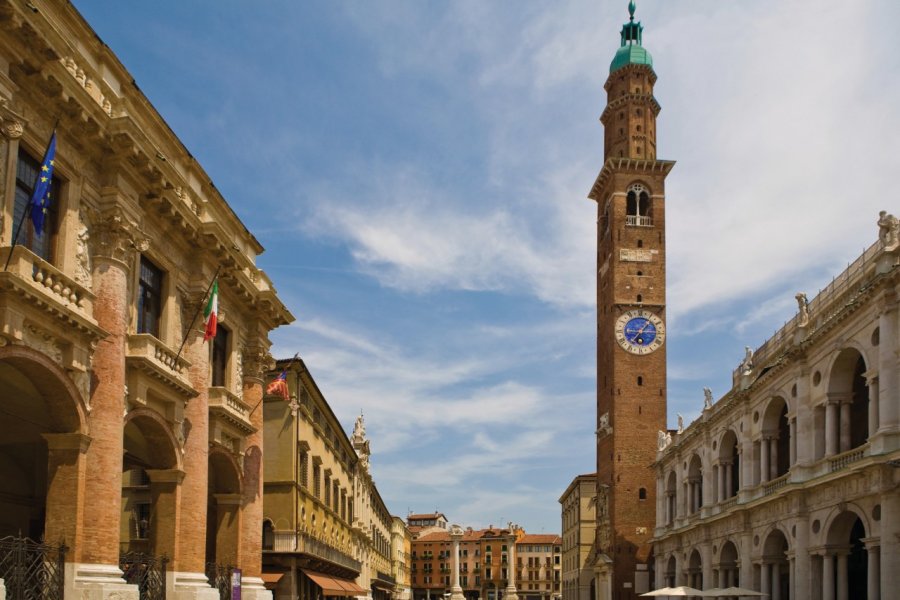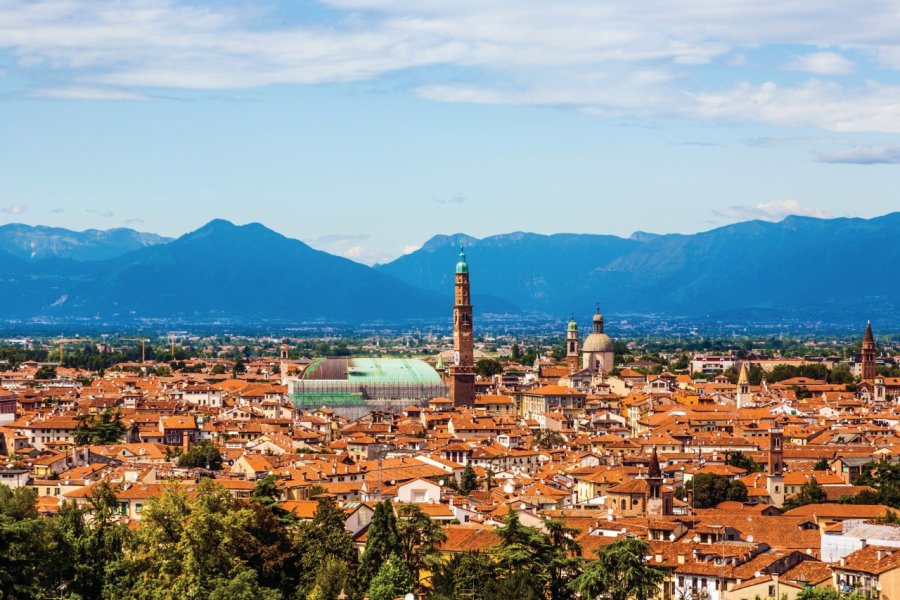Travel Guide Vicenza
Find an accommodation
Advertising
Situated at the foot of the Berici Mountains, at the confluence of the Retrone and Bacchiglione rivers, Vicenza is strategically located in the heart of the Veneto region. Founded between the 11th and 7th centuries B.C. by the Euganean populations (few testimonies are preserved in the Santa Corona archaeological museum), the city, under the name of Vicetia, became a Roman municipality in 49 B.C. and, at the same time, an important crossroads of communications in the Veneto. The Roman period left many traces in the structure of Vicenza, built according to the scheme of the Roman castrum, whose Decumano massimo, the present Corso Palladio, crossing the centre along the west-east axis, corresponded to the consular road Postumia. With the Lombards, Vicenza became the seat of a duchy, destroyed in 899 by the barbarian invasions. A free municipality in 1164, the city was first a domain of Padua, then of Verona, and from the 13th century onwards it was under the tyranny of Ezzelino III da Romano. After his death in 1259, it became a Paduan possession again until 1311, when it came under the rule of the Scalas of Verona. In 1404, after a short domination of the Visconti of Milan, Vicenza, like the rest of the Veneto, became a possession of Venice. This period of 4 centuries is the richest in the history of Vicenza. The city acquired its unique physiognomy which earned it the nickname of "Venice of the mainland". The names of the noble and middle-class families of Vicenza (Thiene, Angaran, Porto, Valmarana, Capra, Chiericati) are linked to the building of splendid palaces and villas. It was a nobleman from Vicenza, Giangiorgio Trissino, who discovered one of the greatest geniuses of modern architecture, Andrea Palladio. At least seven of his palaces, built within a radius of 700 m, are visible in the heart of the city. All of them, although poor in the choice of materials, are imaginative in their architectural composition. The Teatro Olimpico, commissioned by the Accademia degli Olimpici, and two other public buildings, the Loggia del Capitanato (unfinished) and the Basilica, are striking examples of Palladio's talent. In the hills just outside the city is the most famous model of the Palladian villas: the Rotonda. Another great Italian artist left his mark in Vicenza, Giambattista Tiepolo, who in the 18th century enriched the Villa Valmarana ai Nani with admirable frescoes.
What to visit Vicenza?
Advertising
Weather at the moment
Advertising
Organize your trip with our partners Vicenza
Transportation
Book your plane tickets
Car Rental
Boat rental
Accommodation & stays
Find a hotel
Holiday rental
Find your campsite
Tailor-made trip
Immersion travel
Services / On site
Activities & visits
Find a doctor






















